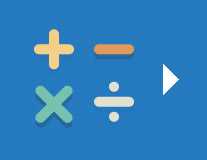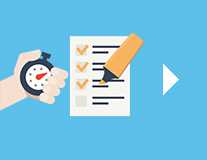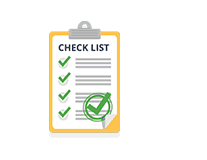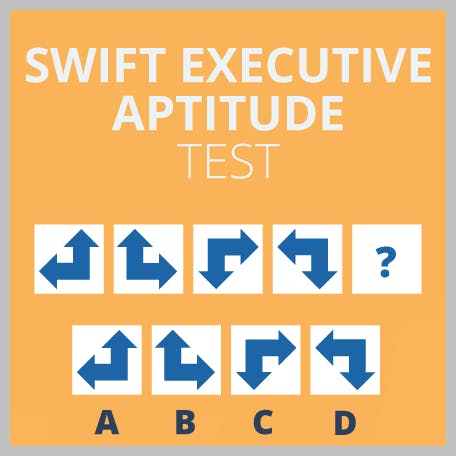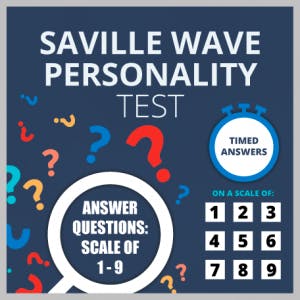The Swift (Saville) Analysis Aptitude Test
Updated May 31, 2024
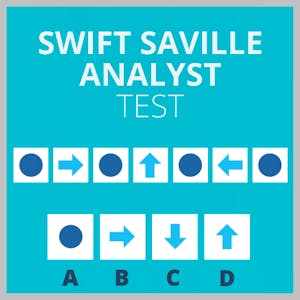
- What Is the Saville Analysis Test?
- The Three Sections of the Swift Analysis Aptitude Test
empty
empty
empty
- Optional Swift Analysis Assessment
empty
empty
empty
- How Is the Saville Assessment Test Scored?
empty
- How to Prepare for the Saville Swift Analysis Aptitude Test
- Frequently Asked Questions
- Final Thoughts

If you’ve recently applied for a managerial or executive role, you may have been asked to take a Saville Analysis Aptitude Test, also known as the Swift Aptitude test.
The Swift Analysis Aptitude Test was created by Saville Assessment, which is a huge name in the test publishing market.
Saville works with top employers to select the best talent for their companies, such as:
- Ernest Young
- Deloitte
- Mercedes-Benz
- KPMG
- Nestle
- Deloitte
Saville Analysis Tests vary depending on the industry and role they’re assessing.
Competition is tight for the roles that use the Swift Analysis Test, so you want to put your best foot forward and impress your prospective employer.
Businesses use the Saville Analysis Assessment generally for higher-level managerial and executive jobs to shortlist candidates so that recruiters don’t waste time interviewing people who don’t have the necessary skills.
Many people find the test frustrating as it doesn’t appear relevant to the jobs they’re testing for.
However, psychometric tests are designed to point out candidates’ skills and weaknesses to determine if they’re suitable for the role they applied for.
This article will explain the Saville Assessment Swift Analysis aptitude test and give you some tips on how to perform your best on the day of your test.
What Is the Saville Analysis Test?
The Swift Analysis Aptitude test is a psychometric test used by some of the world’s top employers to determine the best potential employees by assessing candidates’ critical and logical thinking skills through various tests.
The Swift analysis assessment tests divided by 3 parts:
- Verbal reasoning
- Numerical reasoning
- Abstract reasoning
Some employers may also choose to assess a candidate's spatial, mechanical or error-checking skills as part of the process.
Candidates have 18 minutes for the Saville Analysis Test, so you’ll need to think quickly.
The Three Sections of the Swift Analysis Aptitude Test
The Swift Analysis AptitudeTest is conducted online and is delivered to applicants before the interview process to find the applicant who possesses the necessary skills for the role.
Each Swift Analysis Aptitude Test consists of 24 questions, containing eight questions in each sub-section:
Verbal Reasoning
The verbal reasoning section of the Saville Assessment tests your ability to understand written language.
You’ll have eight questions to answer within the time limit. You should aim to finish the verbal reasoning section in around six minutes.
It will involve reading a piece of text and answering multiple-choice questions based on your reading.
Here’s a Swift Analysis Aptitude Test example question you should expect in the verbal reasoning section of the test:
Stress is becoming one of the norms of modern life for lots of people. Constantly being connected to digital devices and being expected to be contactable 24 hours per day, and infrequent or ineffective stress release mechanisms are causing more and more people to be stressed or even diagnosed with another mental health condition.
Question statement: Stress is increasingly common in modern life.
a) True based on the passage
b) False based on the passage
c) Impossible to say
Numerical Reasoning
The numerical reasoning section assesses of the Saville Analysis Aptitude Test the candidate's numeracy skills.
There will also be eight questions in this section that should take around six minutes to complete.
This section covers areas such as statistical data, graphical interpretation, and financial information.
Here’s a Swift Analysis Aptitude Test example question for a graphical interpretation in the numerical reasoning section:
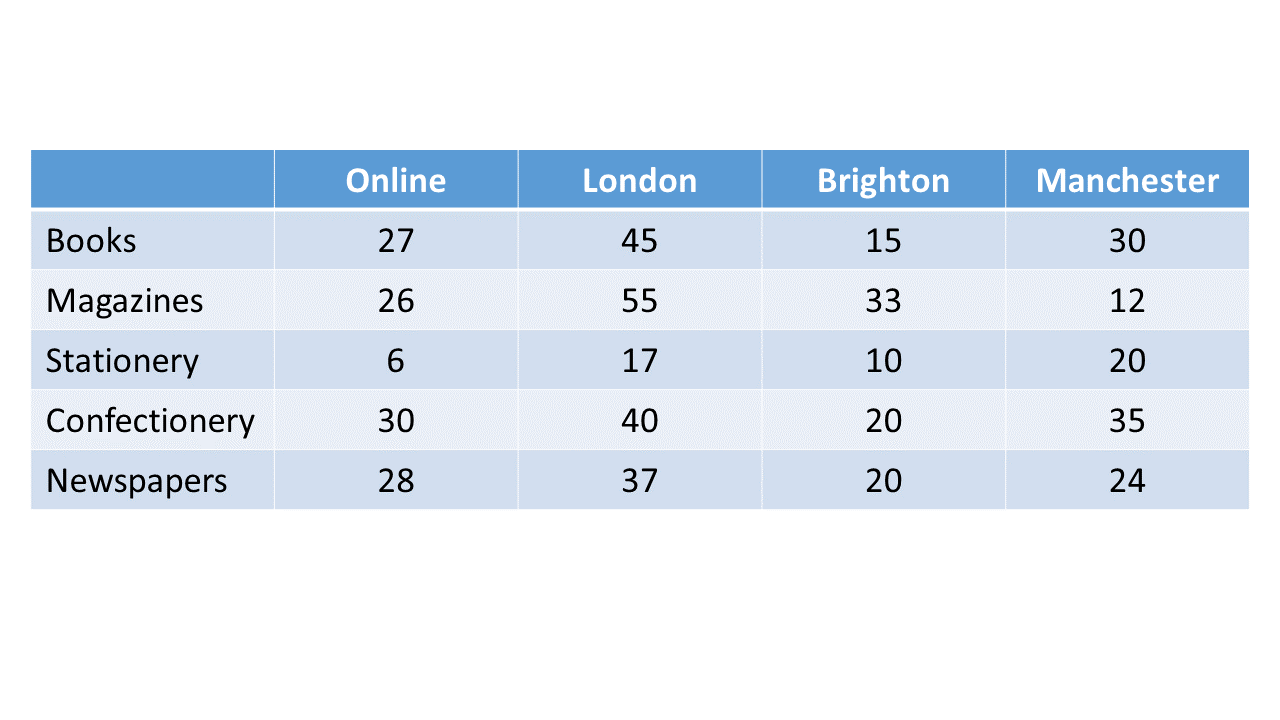
What is the total volume of online sales for newspapers and magazines?
Abstract Reasoning/Diagrammatic Reasoning
The abstract reasoning section of the Saville Test will give assess the candidate’s logical reasoning.
There will again be eight questions that you should aim to complete in around six minutes.
It will show you several diagrams, and you’ll be required to choose which shape fits the sequence.
Here’s a Swift Analysis Aptitude Test example question you should expect in the abstract reasoning section of the test:
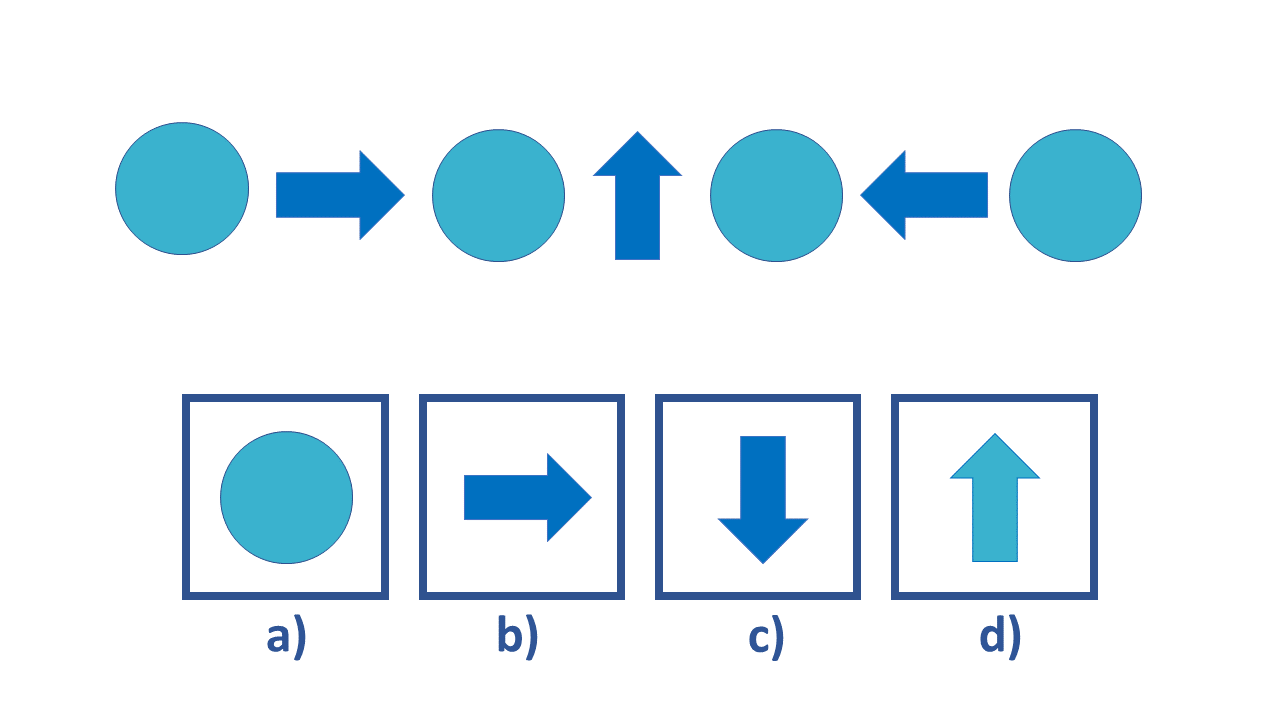
Optional Swift Analysis Assessment
There are additional tests that your prospective employer may request you to complete. If you are to complete the additional tests, they will be separate from the main test.
Depending on the role you’re applying for, you may also have to do one or more of the following Saville tests:
- Spatial testing
- Mechanical testing
- Error-checking aptitude
Spatial Testing
Spatial testing assesses your ability to solve problems around you that require visualization to find different solutions.
Mechanical Testing
This test is usually used when employing engineers or designers who are required to solve complex mechanical problems.
Error-Checking Aptitude
This test is used to assess a candidate’s attention to detail and ability to check for small errors that may go undetected.
It will also look at the candidate’s confidence when you have to correct errors others have made.
How Is the Saville Assessment Test Scored?
The scores from the Swift Analysis Aptitude Test are given in the form of an aptitude profile, which is split into seven sections.
The aptitude profile gives scores for the individual components of the test. It also shows a score for accuracy, speed, caution and a total score that takes all of these elements into consideration.
The seven sections scored on the aptitude profile are:
- Verbal – This score tells you how well you performed in the verbal section of the test. It considers how many you answered within the time limit and how many were correct.
- Numerical – This score tells you how well you performed in the numerical section of the test. It also considers how many you answered within the time limit and how many were correct.
- Diagrammatic – This score tells you how well you performed in the numerical section of the test. It also considers how many you answered within the time limit and how many were correct.
- Accuracy – Accuracy looks at the total number of questions you answered correctly.
- Speed – Speed tells you how fast you were at answering the questions, whether they were correct or not.
- Caution – This shows how much weight accuracy is given over speed and looks at which you prioritized.
- Total score – The total score is based on the assessment as a whole and takes all of your correct answers into consideration.
What Is a Good Score on the Swift Analysis Aptitude Test?
You’ll have a Sten Score for each of the seven sections of the Saville Assessment.
These will be scores out of ten, where ten is the highest.
These scores are delivered from a score of one, which shows low potential, and a score of 10, which shows exceptionally high potential.
A Sten Score of five indicates that a candidate has a higher potential than 40% of the comparison group.
A Sten Score of eight shows that a candidate has 90% higher potential than the comparison group.
How to Prepare for the Saville Swift Analysis Aptitude Test
For these styles of tests, it’s impossible to predict what questions will come up.
However, you can prepare by practicing the general style of questions.
Practice really does make perfect for Saville Swift Analysis Aptitude Tests.
At the end of the day, this test is the pathway to your dream job, so being well-prepared and confident when you sit down to do it could reap huge benefits.
Step 1. Do Practice Tests
Doing practice tests is by far the most effective way to prepare for any type of aptitude test.
There’s no way to know exactly what will come up on the test, but getting yourself used to the kinds of questions will help you a lot.
Luckily, you can find Swift Analysis Aptitude practice tests free online to be prepared for the big one.
The good thing about doing a practice test for the Swift Analysis Aptitude Test online is that you’ll see your Saville Swift Analysis aptitude results straight away, so you can work on the areas you’re not scoring as high in.
Step 2. Understand the Test Format and the Skills Being Tested
Knowing what’s going to come up on the test is a good way to ensure you’re familiar with the format and won’t have any surprises on the day.
While the questions will change for each test, the format will always remain the same.
So, by being familiar with it, you can save yourself time by not having to get familiar with it on the day of the test.
Step 3. Get Comfortable in an Exam Environment
During preparation, you should practice doing the aptitude test under exam conditions and get used to being under timed conditions.
It’s easier to get the answers correct when you have the time to think about them. But being able to come to conclusions quickly is one of the skills you’ll be assessed on, so make sure you get used to completing within the strict time limits.
It will take time to get used to this, so don’t be disheartened if you can’t finish it in 18 minutes on the first couple of attempts.
Remember that you will only have one attempt on the day, so you need to make the most of it by being well prepared.
Step 4. Pay Attention to Detail
Attention to detail is a huge component of the Swift Analysis Test. In pressured situations, it can be easy to miss small details.
There won’t be trick questions, but there may be small details included in the questions that could be hard to miss.
Step 5. Be Able to Focus Under Pressure
Many people find it difficult to focus and concentrate in high-pressure situations. There is a lot at stake with this test; it’s the pathway to your dream job.
While that can be scary, try to turn your energy into focus and really put your best foot forward.
Step 6. Get Enough Rest
This advice won’t be new to you, but it’s crucial you’re well-rested before you sit down to do the exam.
Have a relaxing evening the night before you take the test to make sure you have a good sleep and feel refreshed and focused in the morning.
Step 7. Practice Relaxation Techniques
If you’re someone who feels anxious or stressed when taking exams, you’ll benefit from doing relaxation techniques before the Saville Assessment.
There are lots of breathing, meditating, and mindfulness activities you can do before doing the test that will prevent you from becoming overwhelmed while sitting the test to perform your best.
The Saville Analysis Test is aimed to assess potential candidates’ verbal, numerical and abstract skills.
It gives the employers the opportunity to find out more about the person’s ability to think critically and logically in time-pressured situations.
You can easily find Swift Analysis Aptitude practice tests free online.
The great thing about doing this is that you’ll see the Saville Swift Analysis aptitude test answers and your results straight away, so you can see the areas you need to work on.
The Saville Analysis Test is designed to be challenging. Many candidates find it extremely hard, so it’s crucial that you are well-prepared.
Once you get used to the style of questions that come up on the test, you’ll find it much easier.
Your ability to re-take the Swift Analysis Test will depend on the employer.
However, it’s unlikely you’ll be able to re-take the exam.
Also, once you take the test for one employer, they could hold on to your results and use these to determine your skills for any future role you apply to within that role.
However, there is also a chance that you’ll be asked to re-take the test.
There is no ‘passing score’ for the Swift Analysis Test exactly. Each employer will have different standards depending on the role they’re recruiting for.
The Saville Analysis Test will score you out of ten for each element and will give you a total score.
During your practice, make sure you take note of the elements you don’t perform as highly for and work on these to ensure you receive the highest possible score on the day.
It’s unlikely the employer will share the score you need to proceed to the next level, so it’s better to aim high for all elements.
The standard Saville Assessment that includes the verbal, numerical and abstract elements is 18 minutes long for 6 minutes per one section.
If the employer has requested that you complete the optional elements of any of the spatial, mechanical or error-checking, you’ll receive more time than the 18 minutes.
The additional time will depend on how many additional elements of the test.
The difficulty of passing the Saville Analysis Aptitude test can vary from person to person, as it depends on your individual skills and preparation. The test is designed to assess your analytical and problem-solving abilities, and your performance will be compared to a norm group. Some people may find it challenging, while others may not. Success largely depends on your familiarity with the test format and your aptitude for the skills being assessed.
The number of questions on the Saville Swift Analysis Aptitude test can also vary, as there are different versions of the test. Typically, the test consists of multiple-choice questions, and the number of questions can range from 20 to 40 or more. The specific number of questions may depend on the version of the test and the organization using it.
Whether you can take the Saville Assessment test online depends on the organization or company that administers the test. Some organizations offer online testing, while others may require you to take the test in a proctored environment. You should check with the specific organization you are applying to for information about their testing process and whether online testing is an option.
Final Thoughts
It’s a little daunting to take any psychometric test, especially if you have not taken one before.
Remember that practice is the ultimate way to prepare yourself to do well in the Swift Analysis Test.
By familiarizing yourself with the format of the test and the type of questions that will come up, you’ll reduce the chance of being caught out on the day.
Preparation will help you feel confident on the day of taking the test and will allow you to fulfill your potential.
Many people feel anxious or nervous on the day of your test, but simple relaxation techniques will help you feel calm and not let your emotions take over you when doing the test.
These techniques can help you perform your best on the day and increase the chances of getting your dream job.



